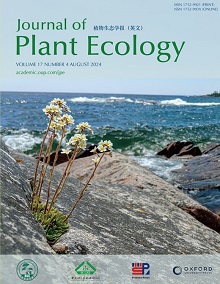Current Issue
-
 Volume 17 Issue 4
Volume 17 Issue 4
Saxifraga paniculata (Mill.) grows in a crack in the bedrock on the north shore of Lake Superior, Canada. Typically found in dry calcareous rock of Eastern and Arctic Canada, Northern Europe, Iceland, and Greenland, it is considered disjunct at Lake Superior and is separated from its core range by over 500 km. Cool shoreline temperatures, driven by deep, cold water offshore and high winds moving inland, have allowed S. paniculata and other disjunct arctic-alpine plant species to persist on Lake Superior's shores since deglaciation. However, warming temperatures, including rapid recent and projected future warming of the lake's surface water, put these species at risk and some are predicted to decline by over 96% from the shoreline, becoming highly restricted to key sections of exposed rock on the north-central shoreline of the lake. Photo taken by Scott Nielsen. See Hillman and Nielsen in this issue.
IF: 3.9
CiteScore: 5.7
CiteScore: 5.7
Editors-in-Chief
Yuanhe Yang
Bernhard Schmid
Yuanhe Yang
Bernhard Schmid
CN 10-1172/Q
ISSN 1752-9921(print)
ISSN 1752-993X(online)
ISSN 1752-9921(print)
ISSN 1752-993X(online)







